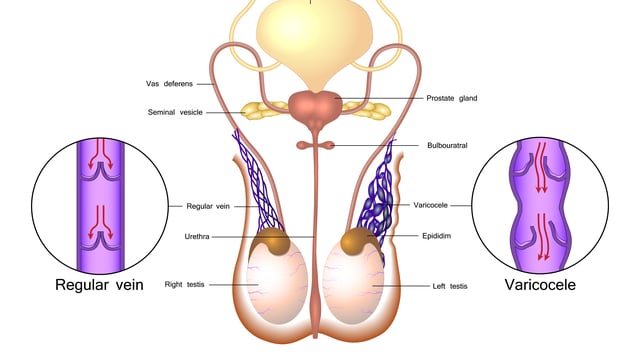It is fairly common to see bulging, twisted veins develop in the legs, ankles and feet. However, the groin and upper legs are often also impacted. So how does it occur and what causes varicose veins in the groin? It begins with understanding the core reasons why the disease develops.
Why do varicose veins develop?
Varicose veins develop when the veins are unable to properly pump blood back to the heart, this causes the blood to pool and the vein to swell.
Symptoms include itching, pain, swelling and if left untreated, serious health conditions can develop. While it’s most common in the legs, both men and women can suffer from varicose veins in the groin. For women, it’s known as pelvic congestion syndrome, while for men it’s varicocele.
What causes varicose veins or blot clots in the groin?
Noticing varicose veins in the groin, along with swelling and irritation is understandably worrying and while it can be uncomfortable the good news is that it’s relatively easy to manage and treat.
Pelvic congestion syndrome
Pelvic congestion syndrome (PCS) occurs when the veins that run across the ovaries and past the pelvis become varicose veins. Resulting in chronic pain that lasts for at least six months, it can be very unpleasant. While there is a number of things that can intensify it, the primary cause is generally hormones or enlarged veins.
The cause of this hormonal imbalance could be such things as pregnancy, growing past adolescence, certain oral contraceptives or HRT.
It’s quite common, with a third of all women suffering from PCS at some point in their life. It most often causes intermittent pain and swelling, and vulvar varicosities can also occur at the same time.
Treating PCS most commonly involves the use of anti-inflammatories and other medication to alleviate the symptoms while the core issue resolves, but in more serious cases it may require a medical procedure that involves a laser fibre inserted into the vein to seal off the varicose and redirect blood flow.
Varicocele
In men, the blood vessels in the scrotum can become varicose and cause what is known as varicocele.
The veins can sometimes be so small that only an ultrasound can detect them or large enough that they cause the whole scrotum to become deformed. They are most often caused when valves in the testicular vein don’t work properly, but they can also occur if there’s an issue in the vein higher up around the abdomen.
About 15 per cent of all men suffer from varicocele.
Most often there’s no pain or obvious symptoms, but in unusual cases, there may be pain and a burning sensation in the area affected. However, in more serious cases, fertility can be affected as well as the production of testosterone.
In the majority of cases, varicoceles are left alone as they don’t cause any harm. However, for those who have more serious cases, or where they are trying to conceive, it may be worth having the problem vein treated. This is most commonly done through a laser fibre being inserted into the vein to seal it off.
Learn more: Testicular varicose veins
Home remedies for varicose veins in the groin
The only way to treat varicose veins is with options such as Endovenous Laser Ablation, Radiofrequency Ablation or Medical Superglue however, some patients find relief from the symptoms and a reduction in discomfort, with home remedies such as:
- Wearing special compression stockings which reduce swelling and improve circulation.
- Following a low salt diet can help reduce swelling caused by fluid retention.
- Avoid sitting or standing for long periods and taking breaks to move frequently.
- Some supplements can assist with reducing aches and pains.
- Regular exercise will promote healthy blood circulation and ease the discomfort caused by varicose veins.
Seek expert advice
The doctors at The Vein Institute specialise in varicose vein treatment. We offer patients a comprehensive program using non-surgical laser treatment techniques. You can learn more in our Definitive Guide to Varicose Vein Treatment.
The benefits of non-surgical varicose vein treatment are:
- Walk-in walk-out treatment
- 98% success rate
- Extremely effective
- Can be performed at a clinic (no hospitalisation)
- No general anaesthetic
- Medicare rebates apply
- No downtime or time away from work
Call us on 0420 102 637, or fill out our booking request form.



